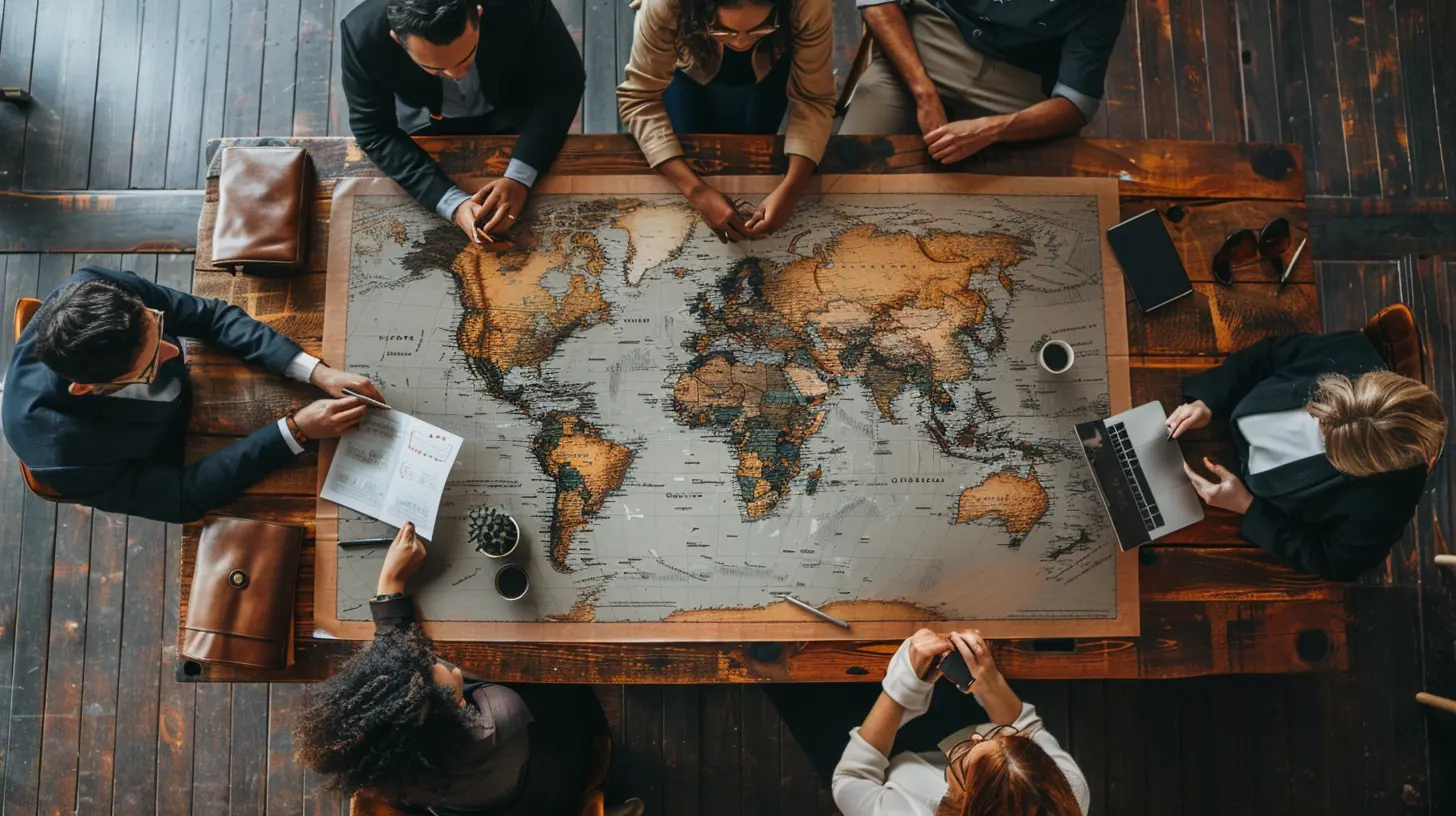The Importance of Adaptability in Global Business Leadership
4 July 2025
Ever tried juggling flaming torches while riding a unicycle backwards… blindfolded? No? Well, that’s kind of what leading a global business feels like in today’s ever-evolving world. You’ve got to balance different cultures, shifting markets, technological tides, and unexpected curveballs like global pandemics or supply chain meltdowns. So what’s the secret sauce to not just staying upright, but actually doing cartwheels on that unicycle?
One word: adaptability.
Yup, it's not just a buzzword your HR newsletter threw at you last week. Adaptability is the superpower every global leader needs in their toolkit. Buckle up, because we’re diving headfirst into why adaptability is the unsung hero in global business leadership—and why you’d better start flexing those flexibility muscles if you want to stay ahead.
Global Business: A Wild and Wonderful Jungle
Imagine you're trying to navigate a jungle. But not just any jungle—this one’s got moving vines, bilingual parrots yelling stock prices, and every path changes daily. That’s global business in a nutshell.You’ve got:
- Diverse cultural norms to respect
- Economic fluctuations to monitor
- Legal regulations that shift by the continent
- Technology that updates faster than your phone battery can die
Sound chaotic? That’s because it is. And the only way to thrive in chaos is to adapt.
What Is Adaptability, Really?
Let’s not overcomplicate it. Adaptability is your ability to pivot when the game changes—and let’s face it, the game is always changing.For global business leaders, adaptability isn’t just about switching strategies. It’s about staying open-minded, learning on the fly, and recalibrating your direction without losing your balance (or your sanity). It's the difference between being a rigid ice sculpture and being water—you go with the flow, but you still have shape and purpose.
Why Do Global Leaders Need Adaptability More Than Ever?
1. Cultural Differences Are Real—And They Matter
You can’t lead a team in Japan the same way you lead one in Brazil. What motivates your employees in Sweden might fall flat in India. Global business leadership isn’t a one-size-fits-all T-shirt; it’s more like a bespoke suit—tailored to fit unique shapes.Adaptable leaders embrace cultural nuances. They know when to speak, when to listen, and how to bridge cultural gaps without stepping on toes. They don’t force their way of working. Instead, they co-create ways that work across borders.
2. Technology Doesn’t Wait for Anyone
Remember when Blackberry phones were cool? Neither do Gen Z.Technology evolves faster than you can brew your morning coffee. AI, big data, remote working tools, machine learning—it’s like trying to hit a moving target in the dark.
Adaptable leaders don’t get stuck in the “we’ve always done it this way” trap. They embrace innovation, encourage experimentation, and aren’t afraid to let go of outdated tools or processes. They push their teams to keep learning and growing, even when it's uncomfortable.
3. Economic Landscapes Shift Overnight
A change in currency value in Turkey might impact your cost of production in Eastern Europe. A drought in Africa could affect your coffee distribution chain in the U.S. Welcome to the butterfly effect of global economics.Rigid plans crumble when markets crash or when trade regulations change. Adaptable leaders stay nimble—they have Plan B... and C… and Z, just in case. They keep their eyes on trends and tweak their strategies like a DJ mixing tracks to match the crowd.
Traits of Highly Adaptable Business Leaders
So what makes an adaptable leader stand out? Here are a few tell-tale traits:1. They’re Emotionally Intelligent
They read the room. Actually, they read the world. They understand how emotions drive decisions and how different cultures express feelings. They’re the kind of people who’ll notice a team member’s furrowed brow halfway across a Zoom call and ask, “Hey, everything okay?”2. They’re Curious Cats (But in a Good Way)
Adaptable leaders never stop asking questions. They love to learn. They’re the kind who’ll dive into a new market not with dread, but with curiosity. They see challenges as puzzles, not problems.3. They’re Comfortable with Discomfort
Change is messy. It’s unpredictable. But adaptable leaders don’t flinch when things get uncomfortable. Instead, they roll up their sleeves, get messy, and figure things out.4. They Empower Others to Adapt
It’s not just about their own agility. They build teams that embrace change too. They create safe spaces for innovation, learning, and yes—even failure. Because failing fast (and smart) is often the fastest road to success.Real-World Examples of Adaptability in Global Leadership
Let’s bring this down to earth. Who's actually doing this well?🌍 Satya Nadella – Microsoft
When Nadella took over as CEO, he flipped the company culture from rigid to inclusive and growth-focused. He embraced cloud computing and collaboration tools, steering Microsoft into the future while making it one of the most empathetic and innovative workplaces in tech.🌏 Indra Nooyi – PepsiCo
As CEO, she didn’t just sit tight with soda. She pivoted toward healthier options, sustainable practices, and global inclusion strategies—well before the rest of the market got the memo.🌎 Howard Schultz – Starbucks
Schultz saw global potential for coffee, but didn’t force American coffee culture down everyone’s throat. He adapted local store designs and product offerings across different countries to respect cultural tastes. Starbucks in Tokyo feels different than one in Toronto—and that's intentional.How To Build Your Adaptability Muscles
Feeling inspired but a little wobbly on the whole “adaptability” thing? No worries. Here’s how to train that flexibility like it’s business yoga:1. Seek Out Diverse Perspectives
Talk to people who think differently than you. Listen—really listen—to global team members, customers, and partners. Diversity of thought keeps you nimble.2. Stay Informed, But Not Overwhelmed
You don’t need to be a walking encyclopedia. But stay curious. Read global news, follow emerging tech, subscribe to industry newsletters. Stay in the know so you can flow.3. Don’t Fear Failure—Learn From It
Try new things. When they don’t work out (and sometimes they won’t), ask: what can I learn? Adaptable leaders treat failure like data—they mine it for insights.4. Encourage Feedback and Collaboration
You’re not a lone wolf. Build a culture where people speak up and ideas cross-pollinate. The more perspectives you gather, the better your decisions.5. Practice Empathy Daily
When change hits, people feel it. Be the leader who understands that. Empathy builds trust—and where trust goes, adaptability follows.The Bottom Line: Adaptability Is the New IQ
Let’s face it—hard skills have a shelf life. But adaptability? That thing never goes out of style. It’s not just a soft skill anymore; it’s your leadership edge in an unpredictable, borderless world.Think of adaptability like your business GPS. Roads might close, traffic might snarl, but an adaptable leader always reroutes—calmly, confidently, and creatively.
So if you’re leading on a global scale—or even thinking about dipping your toes into international waters—start flexing that adaptability muscle now. Because in this business jungle, rigid trees break. But the bamboo? It bends with the wind and thrives.
Now, are you ready to lead like bamboo?
all images in this post were generated using AI tools
Category:
Global BusinessAuthor:

Caden Robinson
Discussion
rate this article
2 comments
Astra Williams
Adaptability isn’t just a skill; it’s the lifeline of visionary leaders. In an unpredictable world, those who adapt thrive—while others fade into obscurity.
November 26, 2025 at 4:05 AM

Caden Robinson
Thank you for your insightful comment! Absolutely, adaptability is crucial for visionary leaders to navigate unpredictability and drive success in global business.
Ashley Marks
Great insights on adaptability! In today's fast-paced global landscape, embracing change is essential for effective leadership. Your points really highlight the importance of staying flexible and open-minded.
July 25, 2025 at 3:11 AM

Caden Robinson
Thank you for your thoughtful comment! I’m glad you found the points on adaptability valuable—flexibility truly is key in today’s dynamic business environment.


